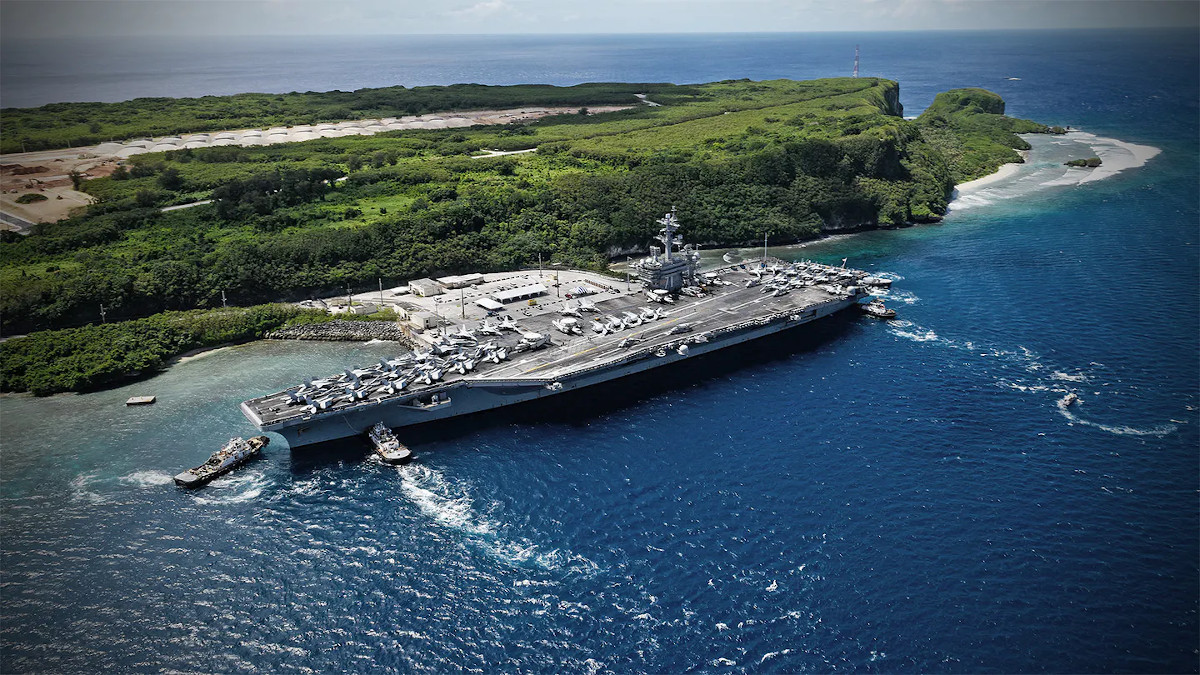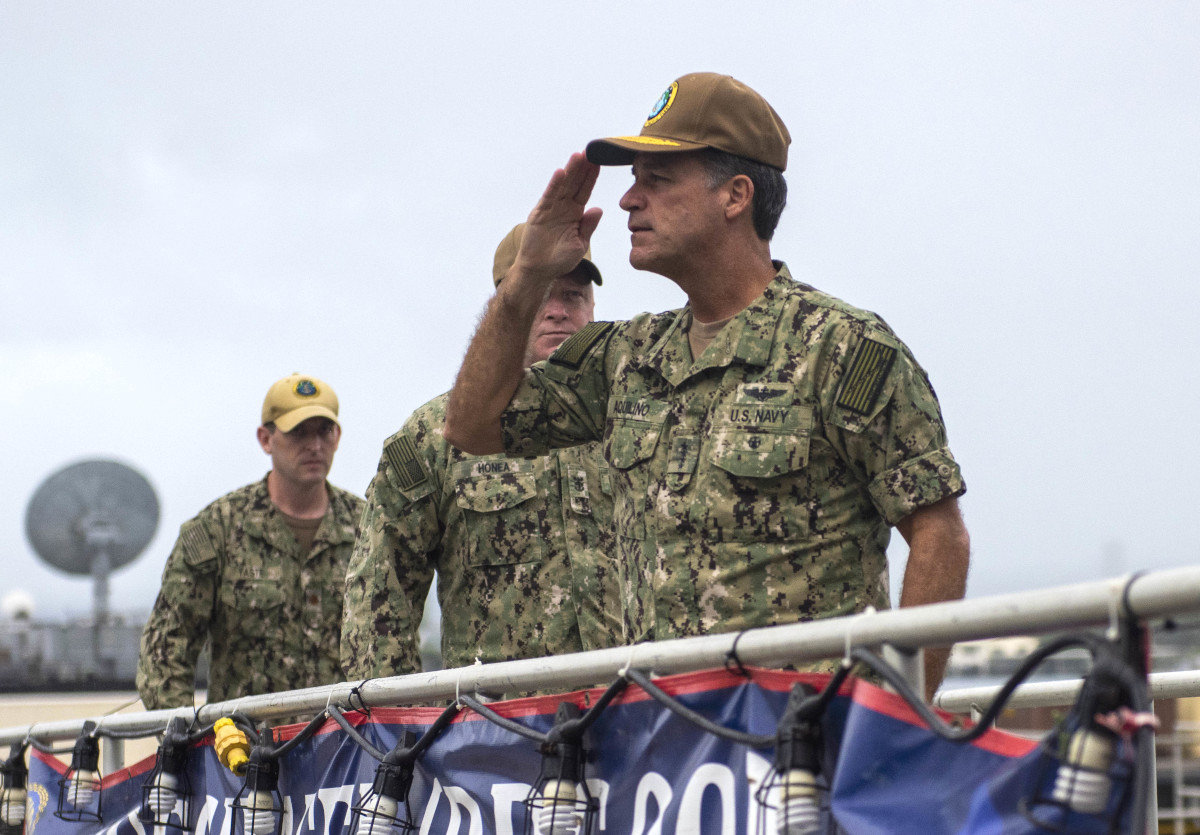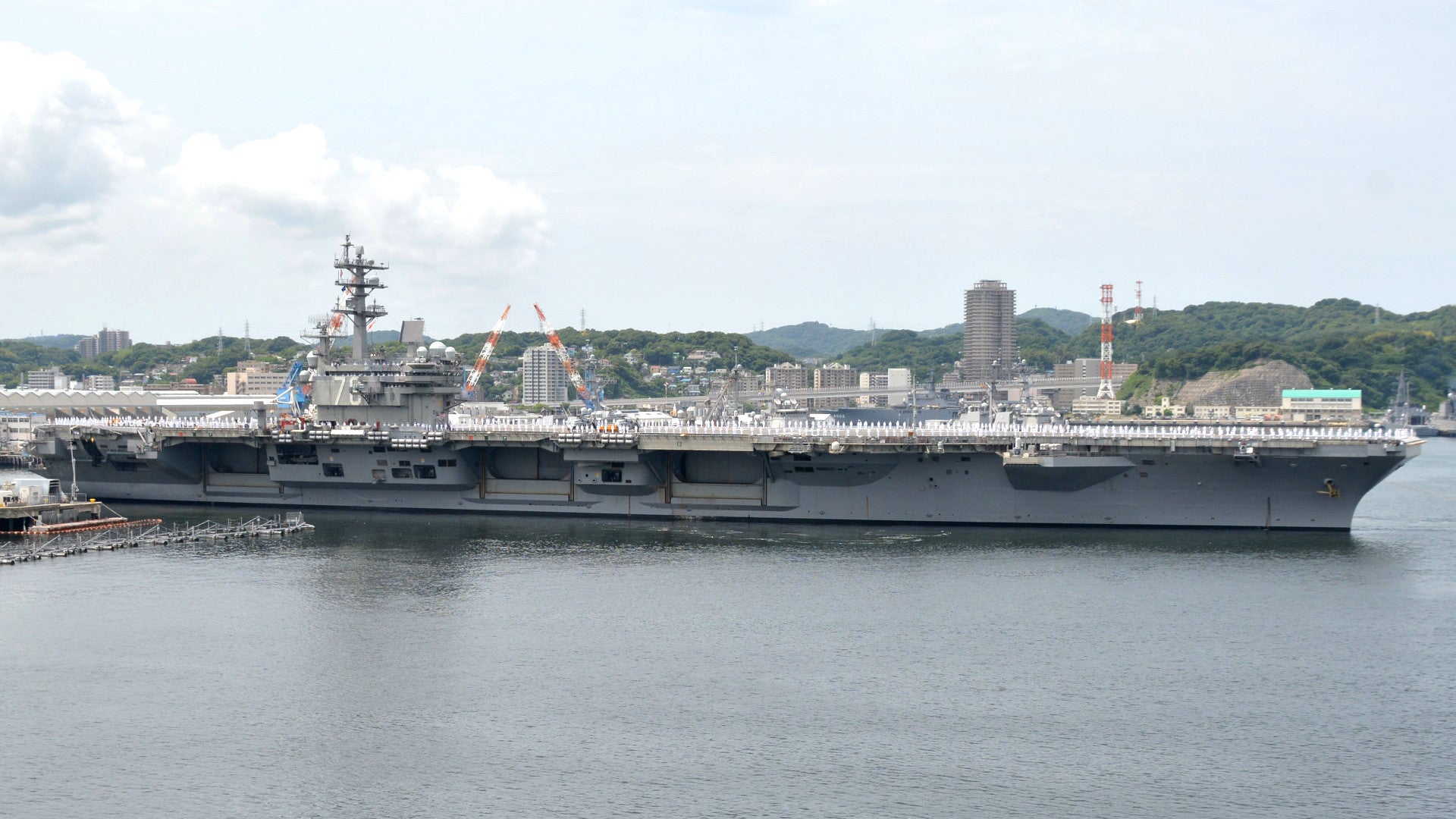Two sailors onboard the Nimitz class aircraft carrier USS Ronald Reagan, which forward-deployed in Japan and presently pier-side there, have tested positive for the COVID-19 novel coronavirus. This comes just a day after the U.S. Navy announced it had quarantined the entire crew of another aircraft carrier, the USS Theodore Roosevelt, on their ship in port in Guam after a number of sailors contracted the virus. The War Zone
had already warned that the Roosevelt‘s predicament could be an ominous sign of what’s to come for the Navy. If Reagan is sidelined, as well, the service would have no carriers presently deployed in the Pacific region that can actually operate.
Fox News was first to report the pair of COVID-19 cases among Reagan‘s crew on Mar. 27, 2020. Fleet Activities Yokosuka, a U.S. Navy base in the city of the same name, where the carrier is presently moored, will reportedly be on lockdown at least through the weekend. It’s not clear yet what other steps the service may take, such as quarantining the entire ship.
Though Japan was one of the first countries outside of China to report confirmed cases of COVID-19, the country has had success in limiting the spread of the virus. However, the Japanese capital Tokyo, some 40 miles north of Yokosuka, saw a spike in cases this week and authorities had already advised all residents to stay home this weekend to help prevent an “explosion” of new infections.
Fleet Activities Yokosuka had also just reported its first confirmed COVID-19 case there on Mar. 26, which was also the first known instance of a U.S. service member being infected with the virus anywhere in Japan. However, the sailor in question had recently returned from the United States and the Navy believes that they may have contracted it while there. The service has not said what ship or other unit this individual is assigned to. The Pentagon has now instituted a 60-day halt to all troop movements to try to help contain the spread of the virus among its personnel worldwide.
It’s unclear what impacts the COVID-19 cases may have on Reagan‘s readiness. The ship is presently in port undergoing maintenance. It is, however, still a worrying development that could leave the Navy with no forward-deployed carriers in the Pacific region. Together, Roosevelt and Reagan also represent a fifth of the Navy’s Nimitz class ships, the Navy’s only truly operational supercarriers.
With regards to Roosevelt, Acting Navy Secretary Thomas Modly stressed to reporters yesterday that the carrier was “operationally capable if called upon to do so.” If that were to change, two of the Navy’s other West Coast-based carriers, the USS Abraham Lincoln and USS Carl Vinson, are not immediately available for operations in the Pacific. Lincoln is in the post-deployment phase after spending a record amount of time in the Middle East earlier this year and Carl Vinson is in dry dock. A member of the Carl Vinson‘s crew was also diagnosed with COVID-19 this week. The USS Nimitz, homeported at Naval Base Kitsap in Bremerton, Washington, situated across the Puget Sound from Seattle, which has been experiencing a major outbreak of the virus, is still working up to its next deployment.

Unfortunately, the virus has demonstrated its ability to spread extremely rapidly, especially in more confined environments where individuals interact closely on a regular basis, such as ships. The Navy is now testing all of the more than 5,000 sailors on Roosevelt to determine how many additional cases there might be. The total number of sailors from the carrier confirmed to have contracted the virus has already jumped from eight to 25 in the past 24 hours.
There are now fears that the virus could spread further among personnel on Guam as individuals are brought ashore for treatment. “We’re fucked,” one servicemember reportedly told The Daily Beast in regards to the developing situation there.
If the crews of both Roosevelt and Reagan find themselves incapacitated due to COVID-19, it could have major impacts on the near-term ability of the U.S. military to project power in the Pacific region during a crisis. This is something The War Zone has explored in-depth already and that you can read about more here.
The U.S. military as a whole may be heading toward a concerning drop in readiness, too. The 1918 influenza pandemic had similarly significant impacts on the Navy, as well as the Marines and the rest of the U.S. armed forces. That virus killed more American service members than had died in the fighting in World War I.
“I gave the fleet guidance and said, we have to do three things,” U.S. Admiral John Aquilino, head of the U.S. Pacific Fleet, told USNI News on Mar. 25. “The first is to ensure the health of our sailors and their families. The second is to ensure that we don’t spread this disease either to the homeland or to our allies and partners. And then the third is that we ensure we maintain our warfighting readiness.”

“We’re managing every event on a case-by-case basis,” he added. “We don’t comment on operational schedules, and we don’t put out information that might give any adversary an understanding of our readiness.”
If the number of cases among Roosevelt‘s and Reagan‘s crews continues to grow exponentially, it may be hard not to acknowledge how serious the situation has become.
Contact the author: joe@thedrive.com
